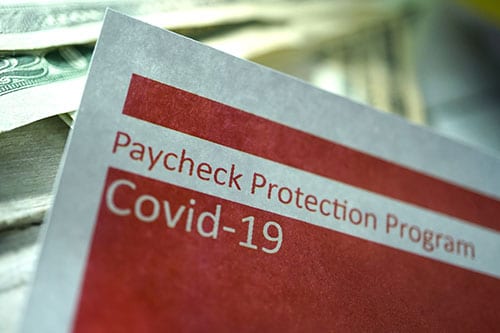PPP Second Round Breakdown For 2020
Just before Christmas Eve 2020, both houses of Congress passed a $900 billion COVID-19 relief billi with a new round of PPP provisions for businesses. Far from just a business focused bill, this relief bill gives out money to individuals, specific government programs, aid around the world, emergency rental aid, and more. However, the sometimes-called PPP2 round of relief has more aid for small business. There are similarities to the first round, but also important differences. Here is an overview of these provisions.
Eligibility to Apply
Those borrowers that qualified the first time around should also be qualified for round 2 relief. Previous PPP recipients may apply for another loan for up to $2 million if:
- The business has fewer than 300 employees.
- They must have used or will use the full amount of their previous PPP loan.
- The business must show a minimum 25% decline in gross revenue for any quarter in 2020 when compared to the same quarter in 2019.
These forgivable loans will also be available to business leagues, such as visitors’ bureaus and chambers of commerce or destination marketing organizations. They must have fewer than 300 employees and have not received more than 15% in receipts from lobbying.
First-time borrowers now can qualify from these groups:
- Businesses with fewer than 500 employees if they are eligible for other SBA 7(a) loans.
- Not-for-profits, including churches.
- Sole proprietors, independent contractors, and eligible self-employed individuals.
- Food service and accommodations businesses as classified by NAICS codes starting with 72 and with fewer than 300 employees.
Previous PPP borrowers that returned all or part of their previous PPP loans are eligible to reapply for the maximum amount available.
Terms of the PPP Loans
As with the first round, this round of loans makes eligible for forgiveness loans money for payroll, rent, covered mortgage interest, and utilities. Also, these loans are potentially forgivable:
- If essential to the borrower’s current operations, expenditures to suppliers.
- Covered worker protection and facility modification expenses which include personal protective equipment to comply with COVID-19 health and safety guidelines.
- Covered operating costs for software, accounting, and cloud computing services.
For forgiveness eligibility, borrowers must spend at least 60% of the loan funds on payroll over a covered period of either 8 or 24 weeks. As with the first PPP round, borrowers may receive a loan of up to 2.5 times their average monthly payroll costs in the year prior to the loan or the calendar year. However, the loan amount has been reduced from the previous $10 million to a $2 million maximum. NAICS 72 code businesses can receive up to 3.5 times their average monthly payroll costs up to a $2 million maximum.
Simplified Terms and Application
A simplified one-page forgiveness form for loans of $150,000 or less is to be created that the borrower submits to the lender certifying:
- How many employees the borrower was able to keep at work because of the loan.
- The amount of the loan spent on payroll costs and the total loan amount.
Records for the loan must be retained for at least four years.
This round of relief repeals the requirement that borrowers deduct from their PPP forgiveness the amount of any EIDL advance. There are also set asides to help PPP borrowers with 10 or fewer employees.
PPP Expense Deductibility
The bill specifies that expenses paid with PPP money are tax deductible. The bill clarifies, according to the Journal of Accountancyii, that “The COVID-19 relief bill clarifies that “no deduction shall be denied, no tax attribute shall be reduced, and no basis increase shall be denied, by reason of the exclusion from gross income provided” by Section 1106 of the CARES Act (which has been redesignated as Section 7A of the Small Business Act). This provision applies to loans under both the original PPP and subsequent PPP loans.”
Other Changes from Original PPPiii
Originally, taking out a PPP loan in the first round made the employer ineligible for the employee retention tax credit. This was a tax credit against 50% of the wages paid to their employees during the COVID-19 crisis. PPP2 has changed this, as recipients of a PPP loan in the original round, if they meet certain conditions, can claim this credit on wages that were not forgiven payroll expenses. Other changes include:
- A safe harbor is included that allows employers to use prior quarter receipts in their comparison calculations.
- The employee wage limit was increased from $10,000 annually in 2020 to $10,000 quarterly in 2021.
- The credit amount on qualified wages paid in 2021 is increased to 70%.
As always, any overview of an expansive government bill requires more detailed due diligence with your tax professional to determine the eligibility and benefits available to your business.
i COVID-19 Relief Bill Summary, Rules Committee Print 116-68
ii COVID-19 Relief Bill key PPC Issues, JournalOfAccountancy.com
iii Changes in second round of PPP, SurePayroll.com

